Yearn Finance Review: DeFi Profit Maximiser
“0 value. Do not buy it. Earn it.” – the final words of the Medium post which introduced the now famous yearn.finance (YFI) token to an already overexcited DeFi space.
Hailed as one of the most decentralized projects in cryptocurrency, the yearn.finance protocol aims to simplify DeFi while simultaneously providing users with the highest possible annual percentage yields (APY) on their deposited cryptocurrencies.

Yearn.finance’s YFI token is referred to by some as the Bitcoin of DeFi and is responsible for the face-melting 2000%+ APY which early users of the protocol capitalized on. Couple this with nearly 200 million USD of assets locked in the protocol and you have a recipe for some serious hype. Thousands are tripping over themselves to get a slice of the YFI pie and by the end of this article you will know why!
Who made Yearn.Finance?
Yearn.finance was created by rogue programmer Andre Cronje. After dropping out of the college where he was studying law, he completed a 3-year computer science program in just 6 months which landed him an offer to teach at the institution which offered the course. Instead, he dove into the private sector, working in insurance, fintech, big data, and distributed ledger technologies (centralized blockchains).
While his colleague was away on honeymoon, Cronje started researching cryptocurrencies and claims that if his colleague had never gotten married, he would have never gotten involved in the crypto space.
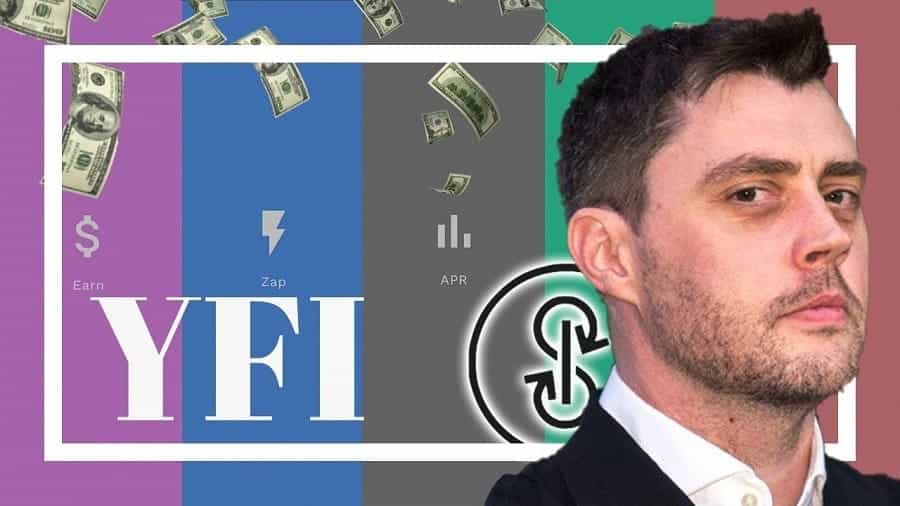
Although Cronje believes most cryptocurrencies are too volatile and speculative to seriously invest in, he is nonetheless fascinated by decentralized finance protocols and the incredible yields offered for stablecoins deposited onto these platforms.
Cronje began investing his and others’ money into these protocols and would manually move the funds to the platform/stablecoin combination that provided the highest APY. He was in the middle of developing a program which would automatically switch between DeFi protocols to optimize yield when he realized he could scale it up and make it public. He began working closely with Curve Finance and Aave to create what would become known as iEarn.

By this time, Cronje was well-known in the cryptocurrency space for his in-depth code reviews on Medium. He became so influential that the reviews he did for Crypto Briefing were for a time considered to make or break a project in the eyes of many in the crypto community.
Cronje believes that DeFi has become so complicated that it has become nearly impossible for the average person to interact with, hence the focus around a simple and intuitive user experience which is central to the now rebranded yearn.finance (AKA yEarn) which was launched in February of this year.
Cronje also aims to make yearn.finance the safest DeFi protocol available, recently proclaiming that he was the first one to put his funds into it and he will be the last one to take his funds out.
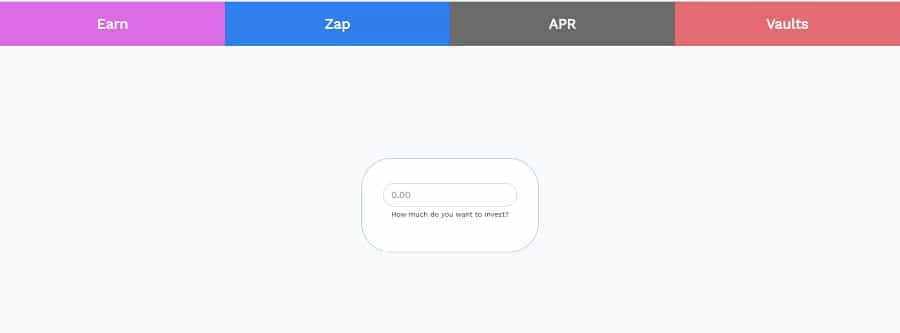
Cronje is passionate about open source technologies, refuses to shoulder any credit for the protocols he has created, is obsessed with dissecting the code of other DeFi platforms in an objective manner, and remains incredibly active in the community and the development of yearn.finance.
In his own words, this requires “hating yourself more than the thing you are building”. Most importantly, when the YFI token was created, he did not keep any of it for himself as is often done in many cryptocurrency projects (though he did farm some of it as a regular user). Cronje also pronounces the YFI token as “waifu” and insists it has 0 value.
What is Yearn.Finance?
Yearn.finance is an ecosystem of protocols built on Ethereum which aims to simplify user interaction with popular DeFi protocols and maximize the annual percentage yields (APY) of cryptocurrencies deposited into DeFi.
The most popular protocol within this ecosystem is yearn.finance (same name) which automatically moves user funds between DeFi lending protocols such as Compound, Aave, and Dydx to maximize APY. The entire yearn.finance ecosystem is community-developed and community governed via the YFI token.

Other protocols in the yearn.finance ecosystem include: ytrade.finance, which allows users to long or short stablecoins with 1000x leverage, yliquidate.finance, which uses flash loans in Aave to liquidate funds, yswap.exchange, which acts as a single source from which users can manually deposit funds to and between various DeFi protocols.
Finally, you have iborrow.finance, which involves tokenizing debt in other protocols with the assistance of Aave so that it can be used in additional DeFi protocols. At the time of writing, only yearn.finance and yswap.exchange are live. The others remain in testnet phase.
What is YFI cryptocurrency?
YFI is an ERC-20 token used to govern the protocols within the yearn.finance ecosystem. YFI tokens can be earned by interacting with these protocols. There is a max supply of 30 000 YFI tokens and there was no ICO or pre-mine. You can earn YFI tokens is by providing liquidity to one of yearn.finance’s platforms (or buy the token from an exchange). The last YFI token was issued in the ecosystem on July 26th.

The yearn.finance community is currently in the process of releasing a new supply of YFII tokens (not a typo – there are two Is) as a means of further incentivizing users to provide liquidity to the yearn.finance ecosystem. YFII is a ‘fork’ of YFI and has a max supply of 60 000. The entire supply of YFII tokens will be distributed over the course of 10 weeks in the same manner as the original YFI token (more on this later).
How does Yearn.Finance work?
The perceived complexity of yearn.finance could be said to be due to the lack of available documentation about the protocol. The clockwork inside yearn.finance is actually remarkably easy to understand compared to other DeFi projects. Given that yearn.finance is commonly used to refer to the protocol of the same name within the yearn.finance ecosystem, this is the one we will focus on in this article.
As mentioned previously, yearn.finance moves stablecoin funds between Compound, Aave, and DyDx depending on which stablecoin asset pool is generating the highest APY. Yearn.finance currently supports DAI, USDC, USDT, TUSD, and sUSD. Since yearn.finance is community governed, the lending protocols it switches between as well as the list of supported cryptocurrencies may and likely will change over time.
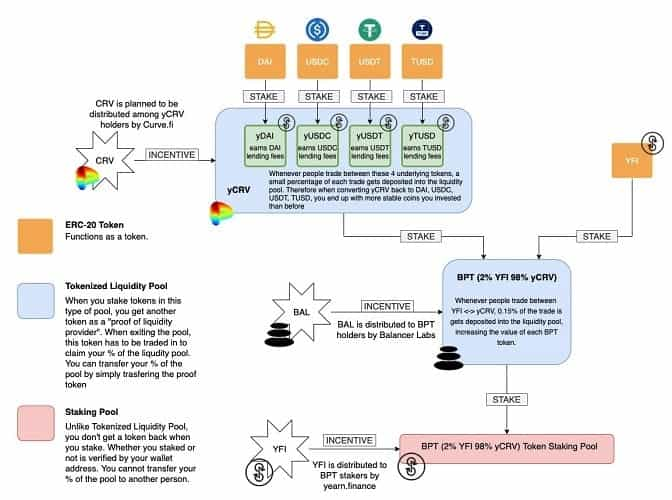
When a user deposits a stablecoin into yearn.finance, it is converted into an equivalent amount of ytokens (e.g. DAI into yDAI). These are known as “yield optimized tokens” and can be used to earn YFI tokens.
Yearn.finance, however, takes the original funds deposited into the protocol and automatically shuffles them between Compound, Aave, and DyDx pools with the highest yield. The protocol also takes a small cut which is deposited into the yield.finance pool which is only accessible to YFI token holders.
How to Earn YFI(I) Cryptocurrency
Before we get into the 3 ways of earning YFI (and YFII), let us take a minute to examine what is going on behind the curtains. Recall the ytokens mentioned in the previous paragraph. These ytokens can be sent to the ypool in Curve Finance, which is a DeFi protocol that allows you to easily trade between stablecoins with low slippage (good exchange rates).
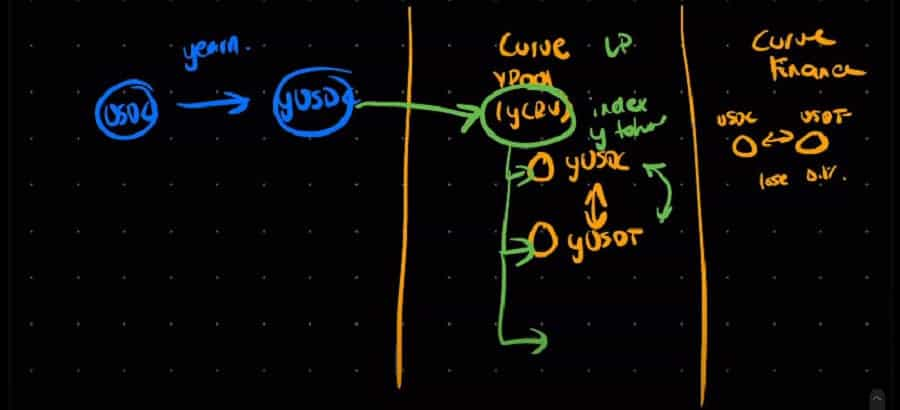
Since Curve Finance incentivizes liquidity mining, this gives you a return in yCRV (yCurve) tokens which are generated for providing liquidity to the Curve Finance protocol. Initially, these rewards were “stuck” in Curve Finance.
The YFI token was created by Cronje to allow users to ‘trade’ the yCRV which their funds were accumulating in the yCRV pool in exchange for governance over the yearn.finance ecosystem.
There are three ways you can earn YFI (and YFII). The first is one was mentioned in the previous paragraph and involves depositing your yCRV into the yGov pool in yearn.finance. The second involves depositing a 98%-2% mix of DAI and YFI into the Balancer protocol in exchange for BAL (Balancer protocol) tokens. These BAL tokens are then despited into yGov in exchange for YFI.
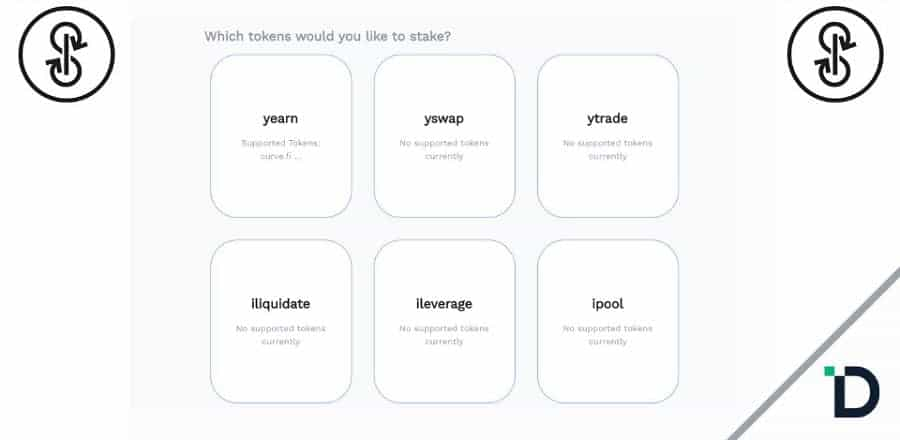
The third method involves depositing a mix of YFI and yCRV into Balancer in exchange for BPT (Balancer pool) tokens which are then deposited into yGov and accrue YFI tokens. When YFI was created, it was designed so that each of the 3 pools would have 10 000 YFI tokens up for grabs. As mentioned earlier, all YFI tokens were farmed by July 26th, roughly 10 days after the token was introduced.
This might all seem confusing but should be easy to understand if you view it through a proof of stake lens. The difference is that instead of staking some cryptocurrency in exchange for the block rewards of said cryptocurrency, you are essentially staking the tokens being given to you by Curve Finance and Balancer in yearn.finance in exchange for governance over yearn.finance. If you are still having trouble understanding how this works, you can watch this useful video (we had to watch it twice).
Yearn.finance Governance
The elements involved in yearn.finance’s governance are a bit trickier to pin down, primarily due to the fact that the details about them are scattered across various yearn.finance Medium posts. For starters, 1 YFI token is equal to one vote.
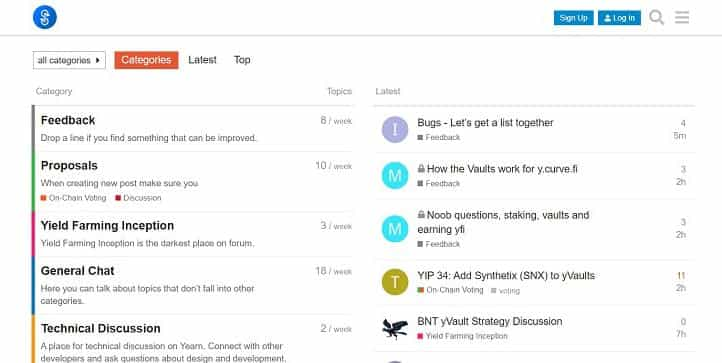
Proposals to the yearn.finance ecosystem can only be tabled if 33% of YFI token holders agree to do so. If this minimum requirement is met, it can be vetoed if more than 25% of YFI token holders oppose the proposal. If approved for voting, more than 50% of YFI holders must vote in the affirmative for the proposal to pass and for the changes to be made to the ecosystem or protocol.
This is where things get interesting. The only YFI holders who can vote are those who have deposited their BPT tokens into the yGov governance pool (the third way of earning YFI noted in the previous section).
This is perhaps why Cronje refers to this governance system as “meta governance” – it involves not only holding the YFI token, but putting yourself in a position of higher risk and vulnerability by having your assets custodied by about half a dozen DeFi protocols which interact with yield.finance.
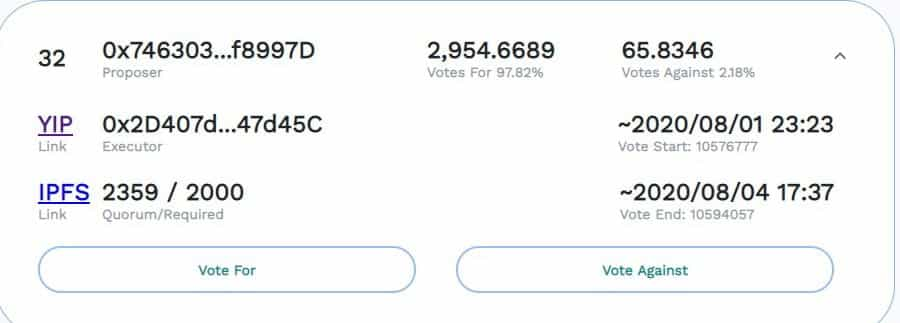
Perhaps the most interesting element about yearn.finance’s initial governance was that YFI token holders could burn their YFI tokens in exchange for the equivalent percentage of funds currently locked in the yearn.finance rewards pool (e.g. if they hold 30% of the YFI supply they can burn it in exchange for 30% of the accumulated assets in the rewards pool).
This was noted earlier in the article, but the actual process of withdrawing funds is a bit more complex. When a YFI token holder requests their share of the pool, the equivalent percentage of funds from the pool are sent to a vault contract which converts them into aDAI, Aave’s interest-generating DAI token. These tokens can then be sent to Aave to be redeemed for regular DAI.
veYFI
In October 2023, Yearn Finance underwent a major transformation in its tokenomics with the introduction of a Vote Escrow mechanism. Users can lock YFI tokens and receive veYFI, which allows them to boost vault rewards and vote on where bought-back YFI will be sent.
The lock duration is flexible and can be chosen at the time of deposit, ranging from one week to four years. While locking for up to 10 years is possible, any duration beyond four years does not result in additional veYFI accrual. This feature provides users with the convenience of avoiding weekly relocks, as they can reset the duration to four years to initiate decay.
Boosted rewards are exclusively available to users with a veYFI lock, and the absence of a lock translates to no enhanced rewards. To maximize rewards, users can opt for a maximum lock duration, continuously renewing it as needed.
Users without a veYFI lock can still deposit into a vault and stake the corresponding token into a gauge, securing a base boost. With the minimum boost, 10% of the farmed dYFI is retained by the user, while the remaining 90% is allocated to veYFI lockers.
Exiting the lock prematurely will incur a penalty of up to 75% of the locked amount. This penalty diminishes over time and is distributed among other veYFI holders.
Now that veYFI has been implemented, only veYFI is the accepted voting power in Yearn's governance.
dYFI Token
dYFI (previously specified as oYFI) is a token introduced as part of Yearn's veYFI tokenomics program. It is an ERC-20 token that allows its holder to buy back YFI at a discount.
dYFI grants the right to redeem tokens for an equivalent amount of YFI, exchanged for ETH at a discounted rate compared to the market rate of YFI/ETH. Ether obtained during redemption contributes to Yearn's buyback initiative, while the redeemed dYFI tokens are systematically burned.
The Yearn.Finance Roadmap
Given that the yearn.finance protocol has only existed for a few months and that governance has only existed for about one month at the time of writing, there is not all that much to say regarding roadmaps. In an interview with Cronje, he describes his development of DeFi protocols such as yearn.finance as a sort of manic episode, with almost all of the groundwork for the protocol being created in the span of a few weeks.
The rapid succession of Medium posts relating to the protocol and the ecosystem is evidence of this – almost all of the information about yearn.finance was posted in the same week.
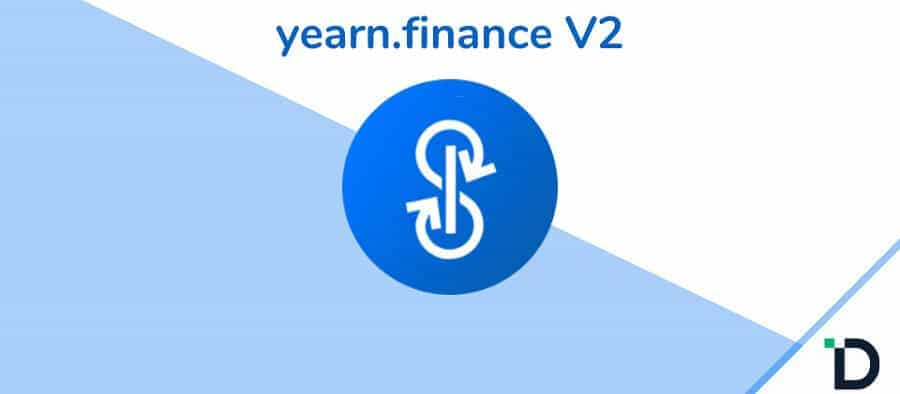
Cronje created the YFI token to usher in a new era of community governance not based on principle, but because he and the other core developers were “lazy and don’t want to [manage the ecosystem]”. Yearn.finance improvement proposals (aka YIPs) are what have been driving the development of the ecosystem since community governance was introduced.
A recent YIP to increase the supply cap of the YFI token failed to reach the 33% vote quorum and resulted in the ‘forking’ of the YFI token into another token called YFII. This was intended as a means to continue incentivizing users to provide liquidity to the protocols within the ecosystem (the assets deposited into yearn.finance dropped by over 60% in the day after the last YFI token was farmed).
In an amusing document created by the yearn.finance community, they explain that the YFII token will be distributed in a similar manner to YFI but will instead have a total supply of 60 000 and see the token emission halve every week, with 10 000 tokens being distributed to each pool in the first week and then seeing a 50% emission reduction on a weekly basis until all 3 pool distributes 20 000 tokens each.

The YFII token does not appear to play a role in the governance of yearn.finance, but this is something that the community could vote to change in the future.
The most notable changes in yearn.finance’s new stage, yEarn v2, involves adding more assets to the ecosystem and introducing a sort of gamification mechanism to incentivize the creation of more efficient yield farming strategies for yield.finance.
In short, anyone can propose a new strategy. If accepted by the community, the proposer gets a cut of the interest generated whenever their strategy is currently in use by any of the protocols within yearn.finance. You can keep track of ongoing YIPs via yearn.finance’s Twitter account and the yEarn governance forum.
YFI Cryptocurrency Price Analysis
The YFI token has not even been on the market for more than a month and has already hit an astounding price of 4900$USD. What is remarkable is that the price continues to appreciate even though all the tokens have been issued and are already in circulation. Besides a ‘slight’ pullback from 3900$USD to 2800$USD on the day before the last YFI token was issued, YFI has been in a visible uptrend since it was issued and does not seem to be slowing down.
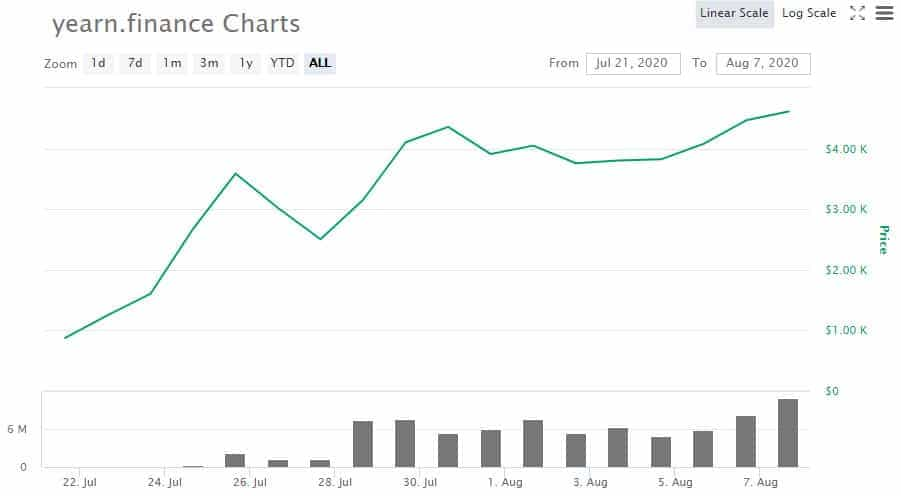
One interesting thing to note is that the circulating supply of YFI is almost equal to the total supply. Only 51 YFI tokens are not in circulation according to CoinMarketCap. It is worth noting that it is possible that these 51 tokens no longer exist since it is possible that someone decided to burn their YFI tokens in exchange for some DAI from yearn.finance’s bountiful asset pool/treasury before the burning function was voted away.
YFII (bonus round!)
Since you have made it this far through the article, it would be a shame if we did not at least touch on the price performance of the recently issued YFII token. Introduced to crypto markets less than two weeks ago at a price of nearly 1000$USD, it settled down to around 130$USD per token within days.
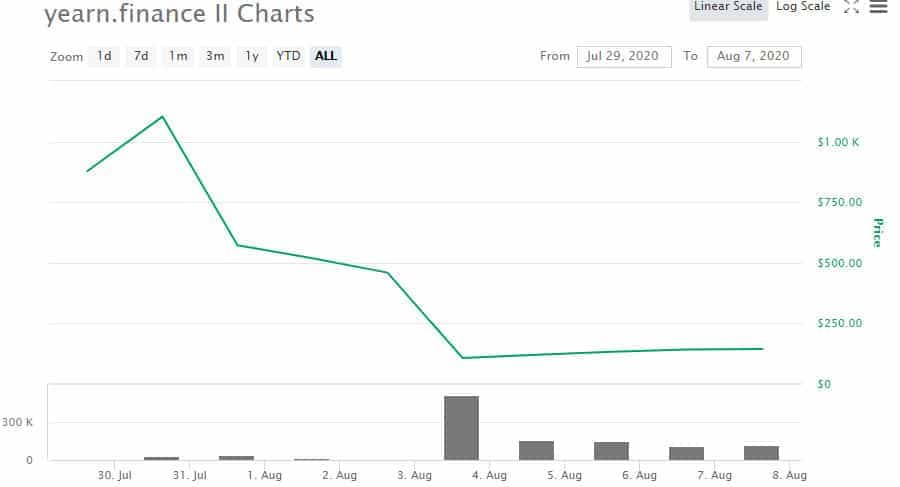
The price looks to be relatively stable over the past week and shows no clear trend to the upside or downside.
Where to buy YFI Tokens
Given that yearn.finance is on the cutting edge of DeFi, it should come as no surprise that the best place to get YFI tokens is on decentralized exchanges. It appears that Uniswap is your best bet, accounting for more than 40% of YFI’s 24-hour trading volume with just the YFI/WETH (wrapped Ethereum) trading pair.
If you prefer centralized exchanges, Poloniex and CoinEx are the only reputable exchanges currently offering YFI token trading pairs. Note that the trading volume on the latter is quite limited.
YFI Cryptocurrency wallets
Since YFI is an ERC-20 token, you can store it on just about any wallet which supports Ethereum-based assets. If you like to keep your YFI super secure and do not plan on trading it any time soon, consider getting your hands on a hard wallet such as Trezor, Ledger, or Keepkey.
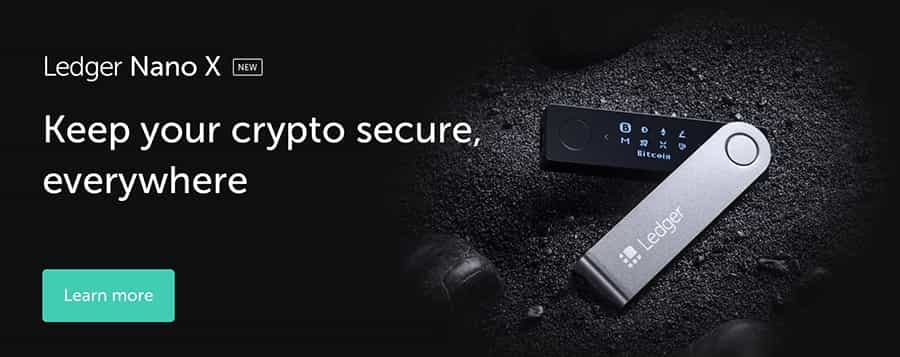
Software wallets are ideal if you plan on moving your YFI around or simply do not want the hassle of keeping track of a tiny USD device. Reputable software wallets for YFI cryptocurrency include Atomic Wallet (mobile/desktop), Exodus wallet (mobile/desktop), and Coinomi (mobile).
Our YFI connection (Our Opinion of yearn.finance)
Yearn.finance may very well mark the dawn of a new era for DeFi. Cronje really hits the nail on the head when he says that DeFi has become too complicated for the average person to use, much less understand. Furthermore, the protocols used within DeFi are so complex that even if they are open source, it makes them practically impossible to properly audit.
Yearn.finance is bringing a much-needed level of actual community governance to DeFi while also providing some impressive returns on investment with (relatively) low risk. That being said, the risk within DeFi remains high, even in yearn.finance protocols.
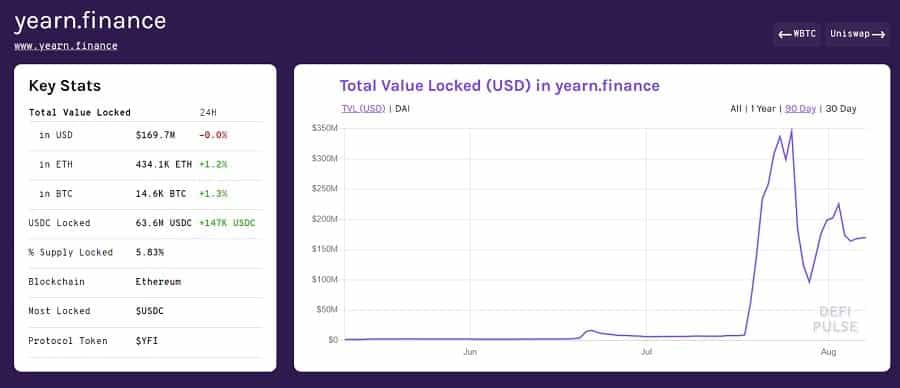
This is especially true when you consider how overextended your funds are when you interact with the yGov using BPT tokens. You are essentially playing with a derivate of a derivative of a derivative of an underlying asset. If anything goes wrong in that chain, you risk losing your funds.
In what may be a first for a cryptocurrency which has compared to Bitcoin, the price of YFI seems to be on its way to hitting a similar USD valuation. Whereas many other governance tokens could be said to be more speculative, the price of the YFI token might be dependent on the total amount of assets locked in the yearn.finance pool.
While the future of yearn.finance is fuzzy, it will provide what is perhaps the first real experiment in decentralized finance that the world has ever seen. While the likelihood that the DeFi protocols we see today may not be here tomorrow, yearn.finance will forever mark a watershed moment in DeFi for many and with good reason: it is a fully functioning proof of concept.
Here is to hoping yearn.finance will still be around for many years to come!
Featured Image via Shutterstock & Yearn Finance
Disclaimer: These are the writer’s opinions and should not be considered investment advice. Readers should do their own research.
Disclaimer: These are the writer’s opinions and should not be considered investment advice. Readers should do their own research.
